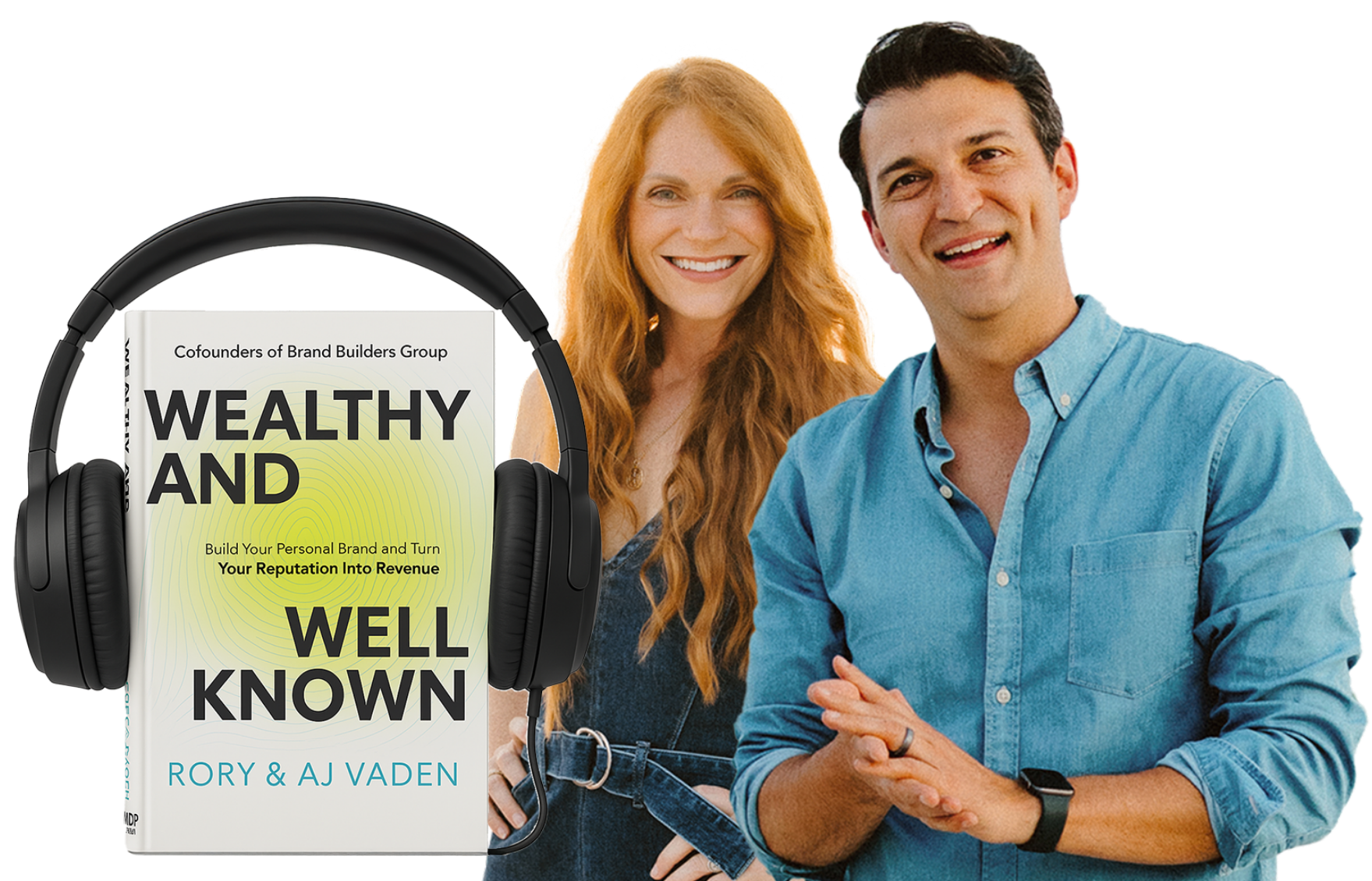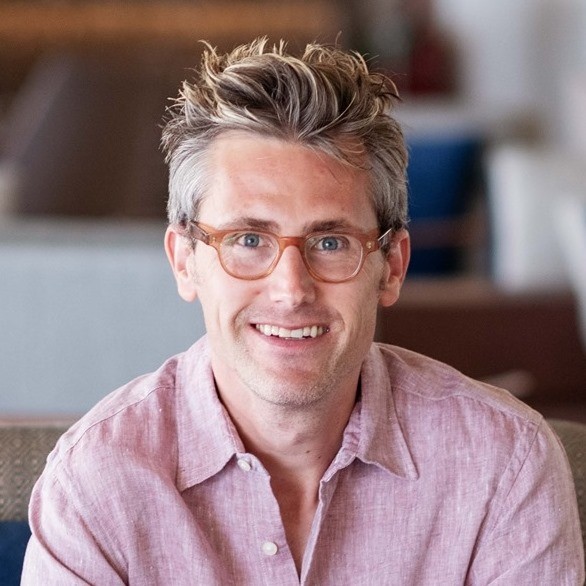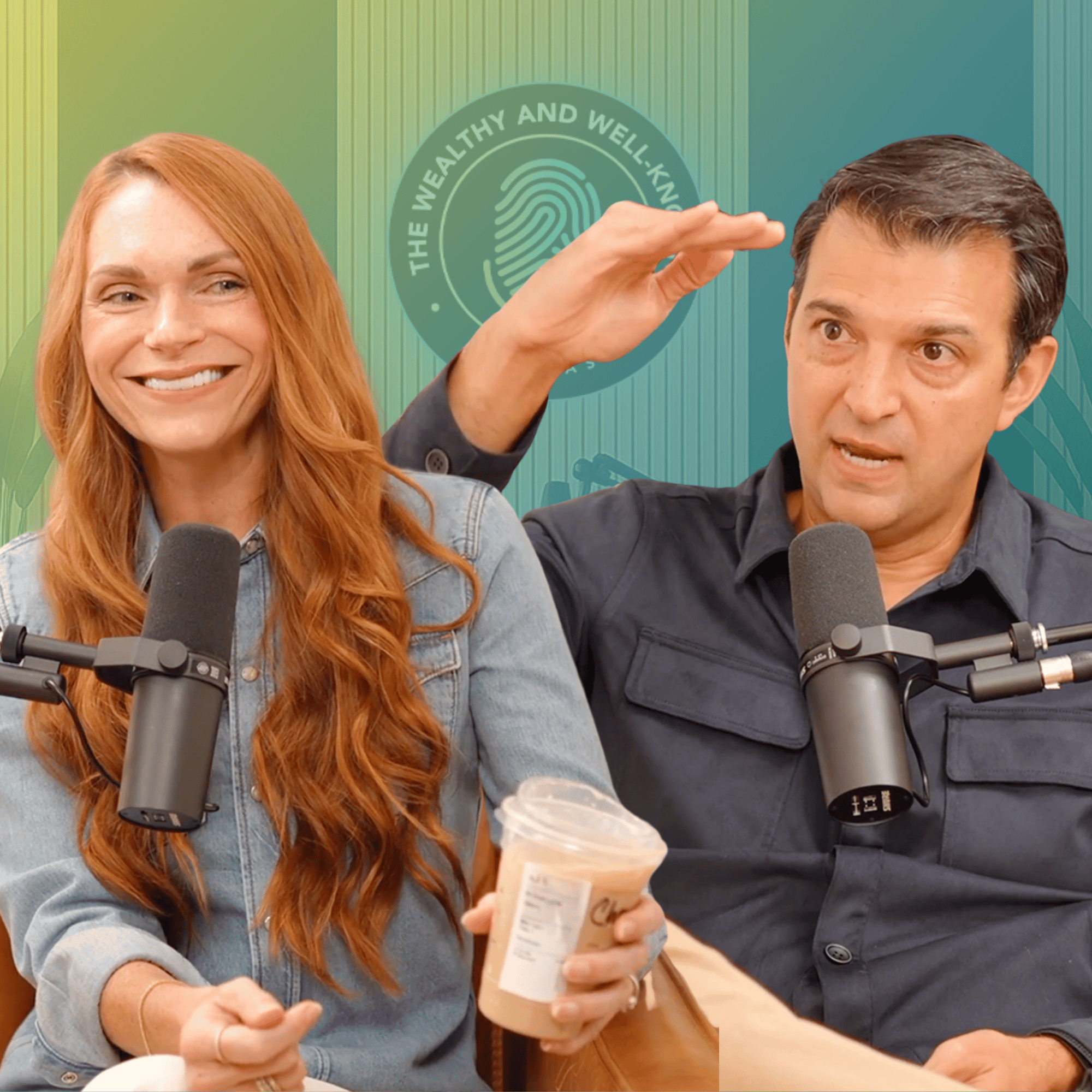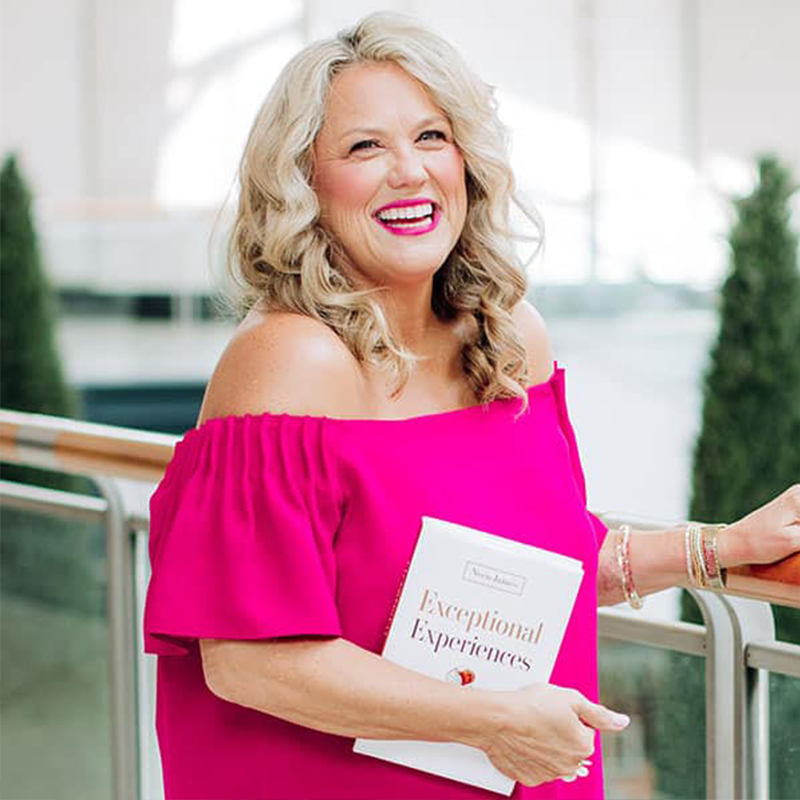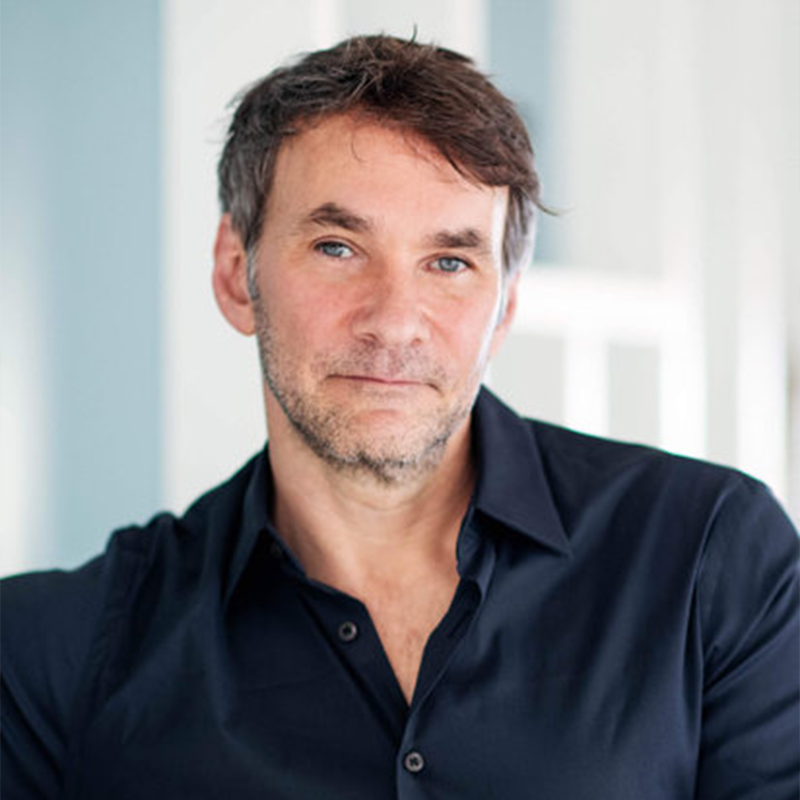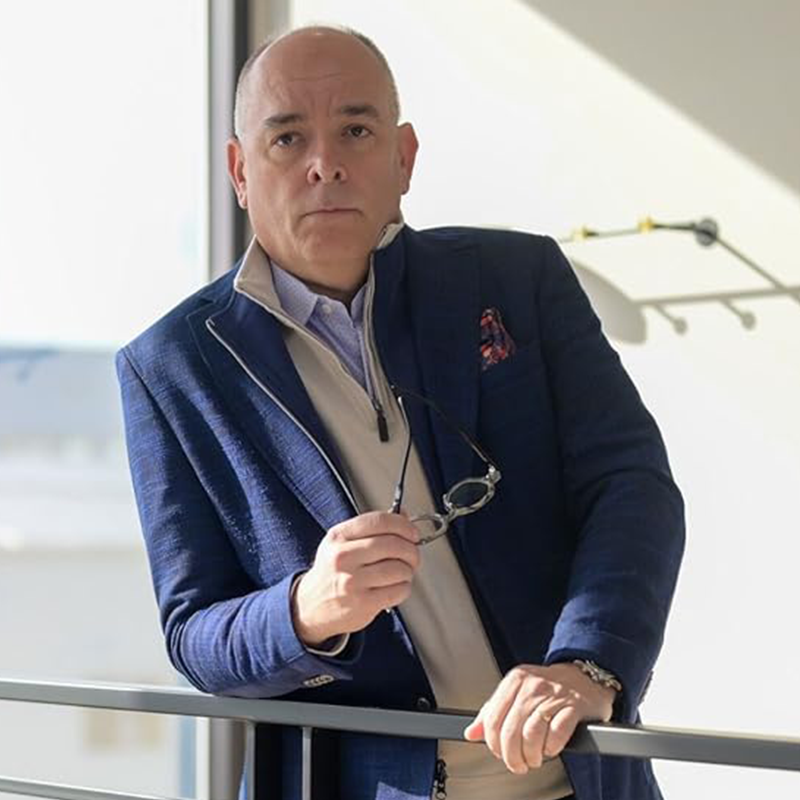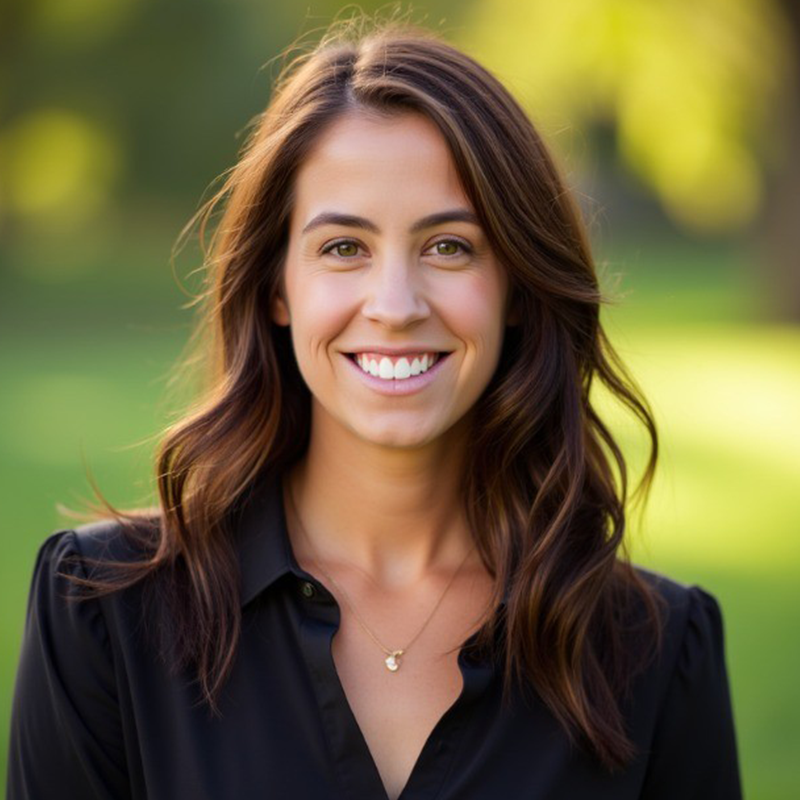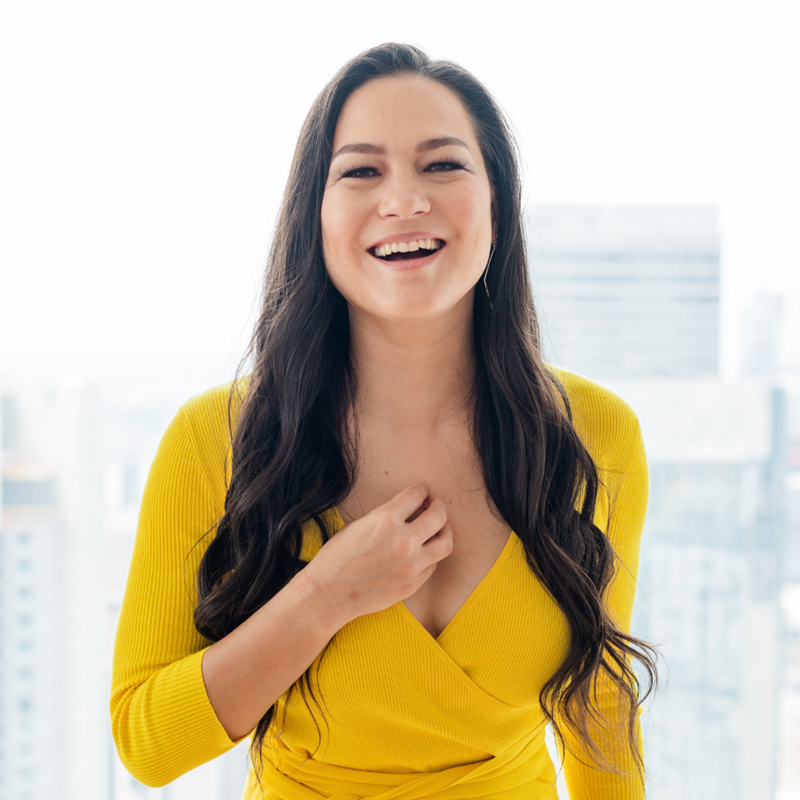Speaker 1 (00:05):
[Inaudible]
RV (00:07):
Hey, brand builder, Rory Vaden here. Thank you so much for taking the time to check out this interview as always, it’s our honor to provide it to you for free and wanted to let you know there’s no big sales pitch or anything coming at the end. However, if you are someone who is looking to build and monetize your personal brand, we would love to talk to you and get to know you a little bit and hear about some of your dreams and visions and share with you a little bit about what we’re up to see if we might be a fit. So if you’re interested in a free strategy call with someone from our team, we would love to hear from you. You can do that at brand builders, group.com/pod call brand builders, group.com/pod call. We hope to talk to you soon.
RV (00:53):
So I straight up overnight manifested 1 million followers. And some of you are out there like trying to get a million followers. I manifested it. I literally like went to bed thinking, ah, what, what do I need to do to get a million followers? And the next day, the next afternoon, I got 1 million followers. It wasn’t 1 million followers on social media. Someone dropped this book off at my house the next day, true story, 1 million followers by Brendan Kane. And so I read the book 1 million followers. I’ve read it, cover to cover. You’re about to meet Brendan. We’ve kind of hang out in some of the same circles we’ve never met in person though. This is our first time interacting. He has a new book called hook point, how to stand out in a three second world. And he’s worked with a lot of celebrities. He’s worked with Rihanna and people like that. Taylor swift and for years, like at MTV working like helping with that. And some of my other friends, I know Vishen from mind valley and people you would recognize, but kind of like his personal claim to fame was that he built a million followers in 30 days. So anyways, I’m just really excited to meet him in person and introduce him to y’all. Cause you might not, you may not know him or maybe you do, but anyways, Brendan, welcome to the show.
BK (02:21):
Thanks for having me. It’s a pleasure to connect with you and everybody listening to this.
RV (02:25):
Yeah, man. So how do you get a million followers? I mean, that’s the name of the book? That’s like what you did and you know, just to kind of dive in to that as, as a, as a starting point, like if you had to sum it all up in a couple sentences, how do you, how do you do it?
BK (02:44):
Well, I mean, in a very simple high level is you create a piece of content. You put it in front of somebody and that motivates them to click the follow button. That is the simple way to do it. Now it’s not necessarily because there’s a lot of nuance that comes into specifically the content side of things. There’s many different ways that you can do it. You can do it through paid acquisition, through paid advertising distribution of content, through other channels or influencers giveaways. You can do it that way, or you can do it purely through the content and playing to what the algorithms are looking for and get mass reach because the algorithms deem your content is playing to the goals that they’ve set for us. We’ve done it every single way. We’ve tested every single way we continue to test every single way. But first and foremost, it comes down to what is the piece of content that is going to motivate or inspire somebody to be like, I need to go and follow this account.
RV (03:51):
Yeah. Well you, that’s interesting just in and of itself, you kind of lifts it off like four big buckets there paid influencers, giveaways and organic. And like when I think about my personal journey, like we had we had six figure followings and then we sold our accounts when we sold our company back in 2018 and actually had to start over in 2018. And most of the followers that we have now are from influencers. They have come from just our network appearing on other people’s shows. We’ve never done a giveaway. We do do organic. We’ve never done paid. So let’s talk about paid. If you had, let’s just say, let’s say you had $20,000 and I say, okay, I’m gonna just go. I’m going to put $20,000 aside sheerly with the objective of growing my reach and growing my following. How would you spend that 20 grand?
BK (04:55):
It depends on the business. So it’s a, it’s a great question. And the, the first place that I always start when working with a client is really understanding the fundamental goals because there’s, there’s a lot of people out there that will think, okay, if I get 10,000 more followers, a hundred thousand, a million followers, my business is going to take off. I’m going to sell a bunch of product, my profit margins, going to go through the roof. I’m not going to sit here and say that that never happens, but it’s a longer term play like building an audience is a longer term play for the business. So if, if it was a business to be like, I need leads, I need revenue. I need to generate profit. Then we’re going to take that $20,000 in and work on lead gen campaigns or conversion-based campaigns to drive that revenue, drive that profit that can then be reinvested in the growth because is it as effective if you sell a product and correlate that purchaser into a follower versus going after a follower?
BK (05:57):
No, but does it happen? Yes. Like if you sell a lot of product through paid acquisition, it will lead to followers. If your product really resonates with you with if your brand does now let’s just put that aside. That’s the first step that I take now, if we’re just like, no, we’ve got our revenue, we’ve got our lead gen campaigns. We’ve got all of that set up. I just want to go after followers. Then it heavily dictates the platform that you’re going on. But one of the most successful ways that we found and you’ve alluded to it, cause you did it organically is if you have other people sharing your content on their channels, that will lead to follow our growth. It’s all a distribution model is like, how can I get my content distributed in other channels that will lead back to mine?
BK (06:52):
And there’s several different ways. Like you said, organically, I do interviews on podcasts or I’m friends with influencers or work with influencers and they talk about me in their posts or they have me on their podcast or they talking about me on their stories. That’s one way of doing it a second way of doing it. One of the successful ways with Instagram is meme accounts, you know, accounts that are all around a specific niche, like there’s meme accounts around quotes, like the good quote or inspirational pages, like note for me, there’s one’s around food or fitness and things like that. And that whole ecosystem is built off of selling advertising, quote unquote, like a shout out on their accounts to correlate back to the followers. So if you don’t have those influencer connections, meme accounts are kind of that next best thing.
BK (07:39):
The next best tactic that you can do, you can leverage the paid advertising networks, but we haven’t really see seen a high enough conversion rate to warrant the spend behind that. I’m not saying that I haven’t heard of people having success with it. We’ve tested extensively ourselves. Facebook super easy to use those platforms for follower acquisition. The other platforms, not so much, but I think at the, at the high level we look at just, how do you get your content distributed across? And I’ll look, let’s look at some larger examples is like you look at the rock. For example, who I think is still like the most followed person on Instagram, people will say, well, he grew that completely organically. No, he didn’t. Every movie he’s in that marketing budget for that movie is a hundred million dollar plus he was in the WWE for years.
BK (08:31):
The, that that company, you know, spends tens of millions of dollars to market their people. Or if he follow tennis recently a young girl, an 18 year old girl won the us open. She went from, I think like a hundred or 200,000 followers to 2 million followers in a two week span. Wow. Because of that distribution of her being on television there was another breakdown that I saw a guy hit a million sub sub subscribers on YouTube. He did a collaboration with Mr. Beast. So if you want to just think about generating followers at a high level, it’s all about how can I get my content distributed in front of the audience that I want and making sure that, that story or that connection to that content that they’re seeing will correlate back to them saying, well, I want to follow this account.
BK (09:22):
So it’s like what I learned early on in the movie industry when I first started is go where the traffic is. Don’t start it from scratch. And even the, the, the core social platforms we’re talking about were built this way. So YouTube was sold for $1.7 billion. And I think it was under 24 months. How did they do that? Well, the predominant player at the time was my space and my space didn’t have a video player. So YouTube had created one of the first embeddable YouTube players. So people that had my space profiles would see their friend upload a video to YouTube or take a movie trailer or something, put it on their profile. And then when you saw your friend had one, you would click the YouTube logo. Cause you’re like, I want one. So that’s how YouTube scaled their traffic so quickly is harnessing the traffic of a different source. The same principles apply to growing a social following. And as we mentioned, there’s many different ways that you can get your content in front of people, but it’s all about how do we get our content, our brand, our message out to where the traffic is and then drive it back to follow our account. What,
RV (10:31):
Yeah, that is such a simple, but powerful concept is interesting. And so when I said, if I was going to put money into it, your thought would be not going promote your page or take a piece of content and like boost it or run it as an ad on Facebook or Instagram. But your thought would be to go, where can I find like a meme account more, more like you’re paying an influencer or you’re paying whatever you can, whoever that person, more like a brand deal rather than running it as advertising. How do you find those? Not, not, how do you find those accounts and then how do you contact them and like get their rates and pricing and stuff.
BK (11:16):
Yeah. Finding them is just searching like one of the greatest assets in the reasons that we’re successful that I find other people don’t do is we are constantly doing research. Like I’ve been in the social media space since 2005 and still to this day, me and my team are always passing, references back and forth, looking at content, looking at content creators. And if you do that, it’s pretty easy to find like you just search. Like if you’re a fitness instructor, go into Instagram, go into Facebook type in fitness, see what type of accounts come up that are driven. Again, it’s not an influencer. It’s not a brand. It’s an account all about that. Or like travel. There’s a lot of travel based ones. Like beautiful destinations is a perfect example of a meme account around travel. So it’s, it takes a little bit of time, but it’s pretty easy to find if you’re actually looking for it.
BK (12:11):
And then most of these companies, even influencers themselves, they’ll have an email for business opportunities, contact us email, or you can direct message them and you can straight out ask them like, what does it cost to work with you? So it’s not super difficult to find it takes some time, but I recommend that if you’re spending any dollar, don’t go with the first person you find, you know, it’s like, actually do your research, do your due diligence of who works. And then always test don’t, don’t spend all of your money with one account until they’ve proven themselves with you. And it’s the same with like in 1 million followers, as you remember. I interviewed a friend of mine who is the chief growth officer for a company called fab fit fun. They reached a billion dollar valuation in a matter of a few years.
BK (13:00):
And it was all through paid acquisition and they’ve tested over 10,000 influencers. The last time I talked to him, it’s probably well over that. And the thing is that, that they know the model they have written on the walls is we love low CPAs. So that’s their benchmark is they love low cost per acquisition. So everything that they do is benchmarked across that. And that goes again to influencers is like they would test and constantly test these influencers. They wouldn’t put all their money into Kim Kardashians. They would test to see who’s generating the content who’s generating the, the reach, the engagement and that, that key KPI that we’re going after, same principles apply here is you test and you iterate to find what is the best growth mechanism for hitting our key KPI in this case, we’re talking about social followers. Interesting. And so there was actually, before you move on, it was interesting.
BK (13:55):
I was watching a video last night and I haven’t seen the show, but squid game and Netflix is the hot commodity. And I think it was Colin and Samir was doing a breakdown of it. And they said that one of the actors is now at 19.6 million followers off of that shell vans, which the key characters are watching their sales are up 7000%. So again, it just goes back. And the thing that I want to engrain in everybody’s head is go where the traffic is, harness it to your ability. But just because you go where the traffic is, doesn’t necessarily mean it’s going to correlate if the content is not there. Like for example, if squid game was no good, if the show sucked, would that actor have hit all those followers? Would vans have that increase in sales? No. So just because you get on Netflix, just because you get on a meme account or if you’ve ever run a paid ad, just because you’re getting in front of doesn’t necessarily mean it’s going to correlate to the action if the content is not designed properly.
RV (15:01):
Yeah. So I want to talk about the content, but on the topic of dollars, I mean, this is, I think, I mean, there’s so many takeaways. I mean, I’ve got like just all these pages, all these pages that are earmarked in here, but you know, like one of the, I mean, you hear about it a lot, but something, it seems like you’ve done as you just kind of split tests. And so like in my mind, I’m thinking, okay, if I’m going to go target like a meme account, not only do I want to do a lighter budget with them, I probably want to test that piece of content organically on my own place, put some money behind it to see how it responds and cold traffic, even just like whatever few hundred bucks or something, and then try to show up and could play the hits basically like give them the best, the, the, the the best stuff that I already know performs, and then just basically use them to throw gasoline on the fire. Yeah.
BK (15:52):
Yeah. I mean, I wouldn’t put, so the way that I would approach that is see how it performs organically. If it’s not performing organically putting paid behind it. And we can talk about the algorithms if you want, but you’re basically training the algorithms that your content is not good. So I would rely heavily on the organic and your best performing organic ones, because I know people like Jay Shetty prince EA even a Gary V they have built massive audiences off the distribution of their content. However, their content performs well, so well organically that when a meme account takes it, and I’m not, you know, most of these people will do kind of like share for share deals or distribution deals, or like in your case, just friends, reposting content their content is designed so well that it’ll perform. So let me give you an example, like there’s, there is a, a meme account called the good quote, and I don’t know what they’re at followers wise.
BK (16:52):
Now they gotta be over 20 million, but I know prince EA and Jay Shetty have a relationship with them. I don’t believe it’s paid, but the good coat will post their content because it’s valuable content. And by the good quote, posting their content that can lead to 25 to 50,000 followers off a single post. However, if you, and we’ve tested with them, if you have a non-optimized piece of content that goes to a good quote or any meme account of that size, and it’s not designed properly, especially from an organic perspective, even if you’re posting it on an account of that size, it may lead to like 500 followers or less. So again, it comes back to how, how good is the content designed to a play, to the reach of what the algorithms are looking for? And then designed in a way that’s like, this person is really fascinating. This person is really interesting. I need to follow them and consume more of their.
RV (17:51):
Now, when you say that, like, people like prince EA and whoever that they have, they have built their followings based on distribution. That’s what you’re saying is that basically they either, you know, their content performs well organically, and then they either build organic relationships with influencers, like what I’m talking about, or they will be able, they’ll just pay to have their content displayed somewhere where there’s a lot of traffic.
BK (18:20):
Yeah. Well, I’m not going to say that Jason,
RV (18:24):
It’s not those two people specifically. Right. But just conceptually.
BK (18:27):
Yeah. And listen, their content is so dialed in that they’re getting organic reach, which is leading to your followers. They’re like the best content creator. So, but they also understand the power of distribution of content on other channels that just fuels that growth even further. Again, going back to the analogy of like the rock, the rock started on the WWE, the wrestling Federation. So that was one channel. And then he’s like, okay, this is interesting, but I want to diversify my brand. So then he was in movies and then he was on magazines. Then he was on television shows. It’s, it’s syndicating out that reach, which keeps amplifying that brand. You know, it keeps amplifying and going in these different directions. It’s not just pigeonholing yourself into one distribution outlet, being your own channel. It’s going to all of the different audiences and driving it back to you yourself.
RV (19:24):
I love it. I love it. So you you’ve mentioned the content, obviously the, which is normally where we, we probably should, you know, start the conversation. I think what’s awesome is you go, yeah, you post it organically. If it’s a winner organically, then it should perform some somewhere else. Is there, is there anything, cause I do want to talk about hook point. I’m fascinated. I think it’s a wonderful title and concept, but on, on the topic of content is there any thing that you feel like we, I mean, I know there’s a lot, you’ve got to say about this and people could obviously get the books, but on content design specifically, is there anything you think that we should know that we maybe haven’t heard somewhere else or you think people overlook?
BK (20:08):
Yeah. And this is one of the core focuses of how we work with people today is working with solo premiers all the way up to companies that are doing 30 billion a year in revenue. We find that that most people are struggling to achieve success with social, whether it’s paid or organic or struggling to break through to the next level is they’re lacking process. And we have a viral content engineering process. That’s backed by over 50 billion views, organically, we’ve generated hundreds of millions of followers for our clients using it and billions in revenue. And that is the biggest thing is most people are just designing content in a vacuum. They’ll basically, you know, set brand guidelines and ideate off of that. Or they’ll just come up with ideas that they like without actually having a process of how to engineer virality. And there’s a lot of misinformation in the market today, mainly because a lot of it has been outdated.
BK (21:11):
So you’ll hear a lot about consistency, frequency, hashtags, time of day, all of those things to drive growth. And yes, was there a point in time in social media that that stuff worked? Yes. but it really doesn’t work as well anymore if your contents not dialed in. And the reason is the amount of people on social media. So we, I remember when I first started in this space you know, Friendster was kind of on the fringe, but MySpace was the big player. And I remember when MySpace hit a million users were like, oh my God, that’s a ton of people using this social media platform. And this was like 2005, 2006. You fast forward to today, there’s 3.9, 6 billion people on social media. And there’s hundreds of billions of pieces of content seated on these platforms every single day. So we went from a million people on MySpace to 3.9, 6 billion people producing hundreds of billions of pieces of content every single day.
BK (22:16):
So what does that mean? I mean, there’s only when you open up any of these apps, no matter which one, they can only see you. One piece of content at a time. It’s not like they can see you a million pieces of content for you to choose from. So the algorithms, and there’s a lot of conversation around the algorithms, what they are. There’s a lot of demonization. There’s a lot of myths about it. Like one of the biggest myths about algorithms. They’re there to get their suppressing, your reach, to get you to pay for it. And it’s completely false because then that means nobody would go viral organically. If that was the case, the algorithms have one job and one job only to keep people on the platform longer because the longer you stay on the platform, the more ads they can serve you. In addition, that means they’re having a better experience and it takes your attention away from the other social platforms.
BK (23:04):
So these algorithms have billions and billions of pieces of content to choose from to keep you on the platform longer. So that’s where people are really struggling is, and I’ve seen it across the board. I’ve seen people generate purely organic followers and have suppressed reach. And I’ve seen people that have generated purely off of paid and are going viral. So I’ve seen it across the board that the most important thing is the content is the content playing to what the algorithms are looking for, which is holding people’s attention. I’ll give you an example. As I’ve, we’re launching a magazine called viral content engineering, and I was interviewing a friend of mine that just hit 20 million followers on Tik TOK. And his name is Alex stamp. You should look him up. He’s amazing. And we were doing an analysis of his, of his content.
BK (23:56):
We looked at his highest viewed video, which was 90 million views. And we looked at another video that was 5 million views, which is kind of like the 5 million, three to 5 million is his average. The 90 million view, the retention was 28 seconds average. The 5 million was 21 seconds. So we’re talking about a seven second differential that made up 85 million views and performance. Wow. That’s the world that we’re, we’re living in. That’s, it’s, it’s just a cutthroat world based upon the amount of content that’s published out there. So that’s where it’s really having a solid process to follow in creating content is critical so that you’re not relying on luck.
RV (24:38):
Yeah. So basically you’re talking about a structure and a process for ideated shooting, editing content that just holding people’s attention for as long as possible. And in this case it’s it’s that, that, that extreme like seven seconds can make a massive, massive difference. But that’s really, it’s really the game. It’s not even necessarily to make good content. It’s just to make content that holds people’s attention, which doesn’t necessarily have to be
BK (25:10):
Good. I don’t know that. I agree with that. I would say that to hold people’s attention, there has to be something that’s good about it because of the, because of the amount of choice that we have in terms of content. Because if the content is not good, I know that there’s 50 other pieces of content I can find. And I would say the best content creators in the world that hold attention are doing a good job, but that doesn’t mean it has to be high production value. Doesn’t have to be a motion picture, but the storytelling technique is, is good. Like I can give you some examples is like the Dodo is an amazing account. It’s all about pets and rescuing pets and things. And most of it’s found footage, or if they’re doing interviews at zoom interviews, the quality of the production is low, but the storytelling is amazing.
BK (26:00):
Like it really connects with your heartstrings about these animals and these rescues and things like that. Another thing is like the top YouTube is used. What’s called the Jenga effect, which is if you’ve ever played Jenga, you know that you have all these blocks stacked up on a table. And with each one, you pull out your closer to the outcome, which is the whole thing falling. But with each block that has pulled out the tension built, you know, what the outcome is, but the tension keeps rising. So an example of it is there’s a YouTuber. That’s amazing named Graham Stephan. And he teaches like millennials about financing. And he did a video. His number one video, I think is about how he got a Tesla for $76. And you watch that video. He doesn’t reveal the math of how he actually did it until like eight or nine minutes in. But that doesn’t mean that he’s filling it with fluff, just to rig the system. He has a storytelling technique that kind of ebbs and flows and builds that tension to the eventual outcome. Mr. Beast, one of the top YouTubers in the world does the same thing is you look at his crazy stunts and you think, oh, it’s just a crazy stunt pulling people in, but it’s not. It’s a storytelling that builds to the ultimate outcome that you came in for,
RV (27:14):
Man. Yeah, that is, that is fascinating. Okay. I, we have to spend a few minutes on hook point. This is, this is what you’re talking about now. So you hear people say this all the time. What’s the, like, what’s the hook, what’s the hook. But they say that in music, what’s the hook. Like they say that, or the cover of a book title, like what’s the hook? What the heck is the hook? Like when people say that, like, what do they mean? And what, what is a hook?
BK (27:40):
So for us, there’s three key pillars to a successful hook point. So first is like, how do you grab that attention? How do you stop the scroll? How do you earn the click? Because without that, in the world that we live in with those billions of competing messages, people are going to move on because there’s so much choice. So your first job as a brand, as a marketer with any piece of content you’re creating, whether it’s organic or paid is how are you stopping the scroll? How are you earning the click? How are you getting that email open? Because without that, you’re never going to get to your store. You will never get to retaining the audience’s attention. So you get completely lost in the noise. And that’s the first signal to an algorithm that your content is not going to retain attention, because if they see people’s filling, plants are not clicking, they’re automatically suppressing reach.
BK (28:28):
The second part is once you have the attention, how do you hold it? Because we don’t, you know, clickbait is kind of gone in a way that the algorithms have picked up on it. I’m not going to say that there’s nobody that’s that successful with it, but the algorithms and even the auctions too, are looking at your ability to hold that attention, because all the attention to the world with no substance doesn’t mean anything. So how compelling is your story to maintain that attention? And then third and finally is how are you monetizing that attention? How does it play to the overall growth of your company of your brand? Now that doesn’t mean that every piece of content has to sell something, but there has to be an underlying foundation and monetization strategy to make it sustainable because otherwise you’re going to burn out or you’re not going to have the time or the resources or the money to keep reinvesting in it. So again, the way that we look at a hook point is a holistic picture is how do we grab attention, hold attention to that, monetize that attention.
RV (29:30):
And in terms of stopping the scroll, grabbing attention like you mentioned clickbait, right? So that would be the sort of like the lowest form of it. I mean, how do we stop the scroll? I mean, you know, it’s, it’s, it’s one thing. And I’d like to you to think specifically about like experts here. A lot of our audiences experts, if you’re an entertainer, it’s, you know, I think it is a little bit different if you’re, you know, you’re showing a cat hanging up the side of a building that grabs our attention, or if you’re a news channel, you’ve got some scary statistic or something
BK (30:05):
That grabs our attention. But if you’re just a, an expert trying to like teach people how to, you know, save money on their taxes or, you know, a lawyer trying to do, you know, just talk about your business or an author, something, how do you grab the attention without like, what are the ways to really capture attention without kind of the you know, kind of, I guess, spamming this kind of things. Well, the first place you have to do is you have to start with research. You have to identify the patterns of what people are talking about of your subject, and also identify the patterns of what’s happening in content. So let’s break down both of those first understanding what and how people are saying about your subject in your specific niche, because the minute somebody sees something and they think that they already know what you’re going to say, they’re moving on.
BK (30:55):
Even though you may have a completely different spin on it. It’s like if you’re a meditation teacher and you, you say in the first three seconds, meditation is the key to content or success or whatever. And I think, okay, I already know that I’m moving on. I’m not giving it a second thought. So identifying the patterns of what everybody else is saying so that you can break those patterns and stand out. Secondarily, you have to understand that people are scrolling through social media. So they just watch LeBron James dunk, a basketball, they watch the squid games trailer. They watch Kevin Hart tell a joke. Now your piece of content comes up. So understanding how do I break that pattern of all these things that they’ve said already? So that is the fundamental core of where you start now, there’s nuance details for each specific sector or industry that you can play with. But in order to design an effective hook point, you have to identify the patterns so that you can break them. And that’s where most people are going wrong with it.
RV (32:00):
And that’s what I heard you say as both the pattern of what other people are saying on your topic and the overall pattern in the way that content is being presented by anybody, which is, which is interesting. It’s like even a video on certain platforms a couple of years ago. Just the fact there was a video would be a pattern interrupt. And today it’s, it’s not at all. Cause we all, we all are used to seeing content that way in the feed. Phenomenal stuff. Brandon, where do you want people to go? This, this was awesome, man. Like I you’re really, really brilliant and just have a real natural mind for this. And I love it cause I don’t find it to be something we’re pretty good at making money, but I don’t think we’re as naturally good as the Martha marketing pieces. And I love this. So where do you want people to go if they want to learn more and connect with you?
BK (32:49):
Yeah. If they want to learn more about the process, they can go to hook point.com. There’s a video that breaks down what we talked about in more detail. And there’s a deck that they can download for free, or they can schedule, call with our team, or if they want to check out the books for hook point, they can buy it anywhere. Or if you go to book dot hook point.com, there’s additional there’s additional ad-ons there or book that 1 million followers.com. But I think like really, if you, if you were intrigued, you want to dive in a little bit deeper, start with hook point.com. Cause there’s a lot of free information there that people can dig into.
RV (33:24):
I love it, man. Well, we will, we will put a a link there. Fascinating, absolutely fascinating stuff, practical stuff. And just a lot of fun I think in breaking this down and I definitely, I definitely recommend it obviously. That’s why we had Brendan on the show and thanks, man, for the gift of your, your wisdom and spending some time with us, we wish you the best.
BK (33:44):
Yeah. Thanks for having me. It was true. Pleasure to connect with you and everybody listening to this

